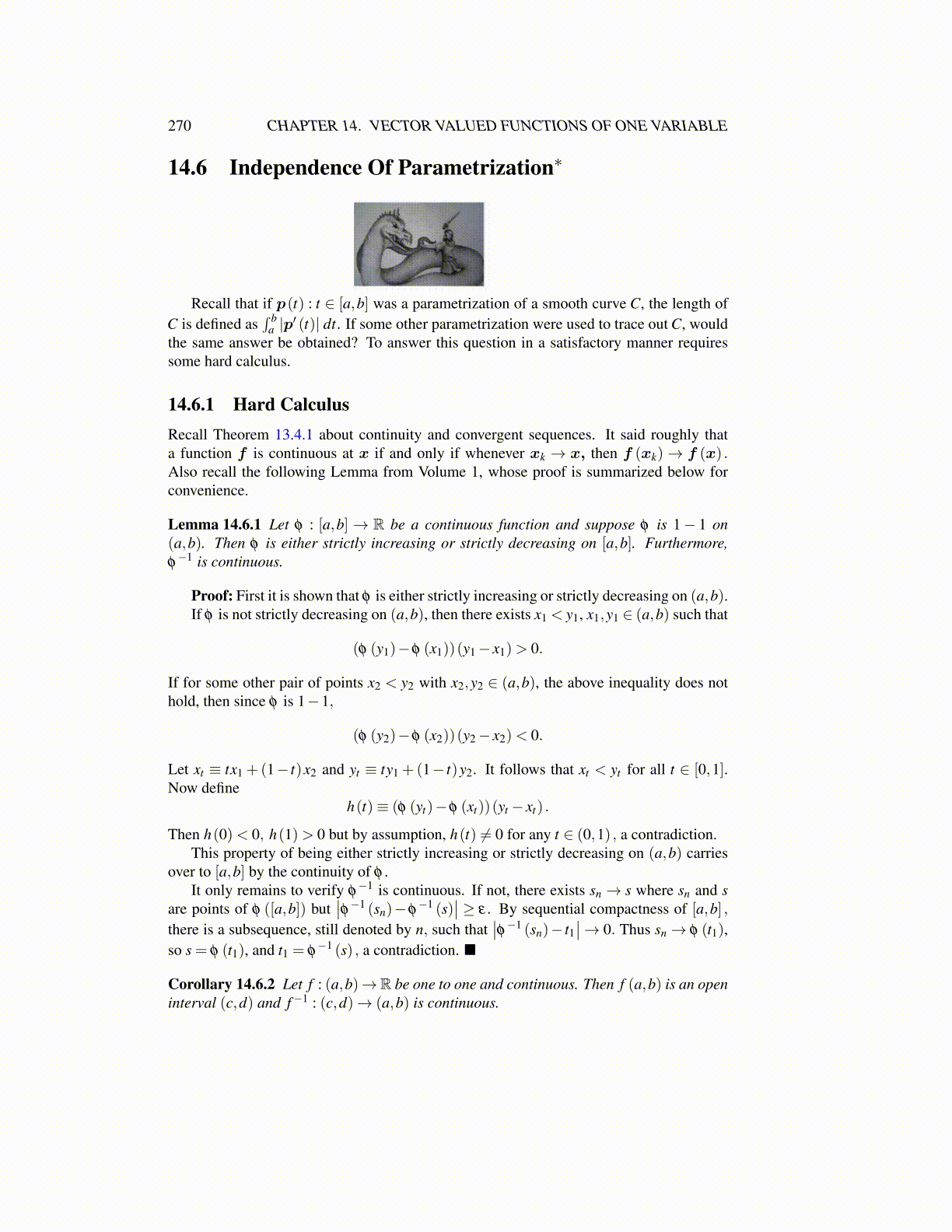
270 CHAPTER 14. VECTOR VALUED FUNCTIONS OF ONE VARIABLE
14.6 Independence Of Parametrization∗
Recall that if p(t) : t ∈ [a,b] was a parametrization of a smooth curve C, the length ofC is defined as
∫ ba |p′ (t)| dt. If some other parametrization were used to trace out C, would
the same answer be obtained? To answer this question in a satisfactory manner requiressome hard calculus.
14.6.1 Hard CalculusRecall Theorem 13.4.1 about continuity and convergent sequences. It said roughly thata function f is continuous at x if and only if whenever xk → x, then f (xk)→ f (x) .Also recall the following Lemma from Volume 1, whose proof is summarized below forconvenience.
Lemma 14.6.1 Let φ : [a,b]→ R be a continuous function and suppose φ is 1− 1 on(a,b). Then φ is either strictly increasing or strictly decreasing on [a,b]. Furthermore,φ−1 is continuous.
Proof: First it is shown that φ is either strictly increasing or strictly decreasing on (a,b).If φ is not strictly decreasing on (a,b), then there exists x1 < y1, x1,y1 ∈ (a,b) such that
(φ (y1)−φ (x1))(y1− x1)> 0.
If for some other pair of points x2 < y2 with x2,y2 ∈ (a,b), the above inequality does nothold, then since φ is 1−1,
(φ (y2)−φ (x2))(y2− x2)< 0.
Let xt ≡ tx1 +(1− t)x2 and yt ≡ ty1 +(1− t)y2. It follows that xt < yt for all t ∈ [0,1].Now define
h(t)≡ (φ (yt)−φ (xt))(yt − xt) .
Then h(0)< 0, h(1)> 0 but by assumption, h(t) ̸= 0 for any t ∈ (0,1) , a contradiction.This property of being either strictly increasing or strictly decreasing on (a,b) carries
over to [a,b] by the continuity of φ .It only remains to verify φ
−1 is continuous. If not, there exists sn→ s where sn and sare points of φ ([a,b]) but
∣∣φ−1 (sn)−φ−1 (s)
∣∣ ≥ ε . By sequential compactness of [a,b] ,there is a subsequence, still denoted by n, such that
∣∣φ−1 (sn)− t1∣∣→ 0. Thus sn→ φ (t1),
so s = φ (t1), and t1 = φ−1 (s) , a contradiction. ■
Corollary 14.6.2 Let f : (a,b)→R be one to one and continuous. Then f (a,b) is an openinterval (c,d) and f−1 : (c,d)→ (a,b) is continuous.